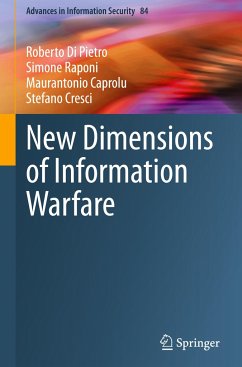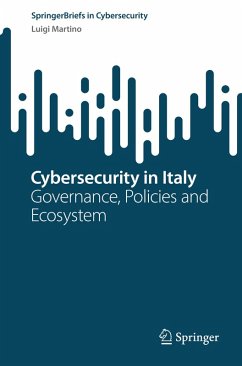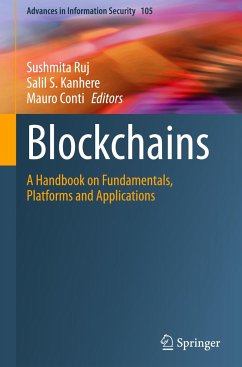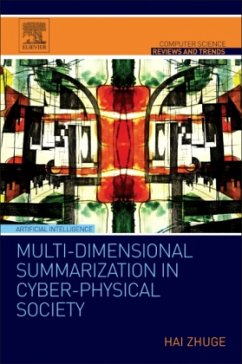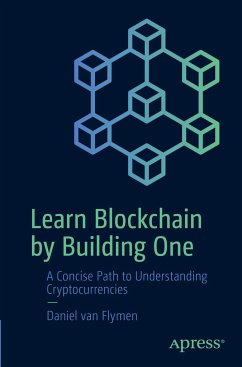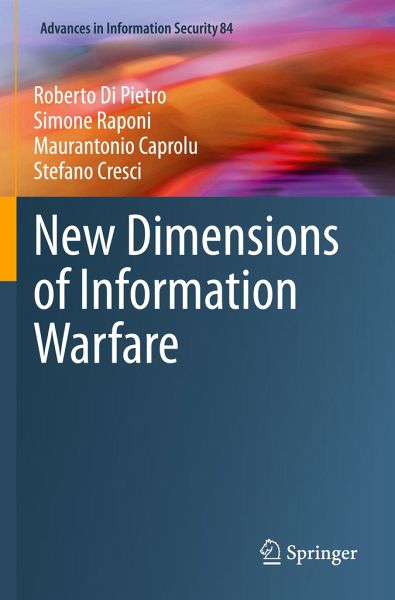
New Dimensions of Information Warfare
Versandkostenfrei!
Versandfertig in 6-10 Tagen
121,99 €
inkl. MwSt.
Weitere Ausgaben:

PAYBACK Punkte
61 °P sammeln!
This book revises the strategic objectives of Information Warfare, interpreting them according to the modern canons of information age, focusing on the fabric of society, the economy, and critical Infrastructures. The authors build plausible detailed real-world scenarios for each entity, showing the related possible threats from the Information Warfare point of view. In addition, the authors dive into the description of the still open problems, especially when it comes to critical infrastructures, and the countermeasures that can be implemented, possibly inspiring further research in the domai...
This book revises the strategic objectives of Information Warfare, interpreting them according to the modern canons of information age, focusing on the fabric of society, the economy, and critical Infrastructures. The authors build plausible detailed real-world scenarios for each entity, showing the related possible threats from the Information Warfare point of view. In addition, the authors dive into the description of the still open problems, especially when it comes to critical infrastructures, and the countermeasures that can be implemented, possibly inspiring further research in the domain.
This book intends to provide a conceptual framework and a methodological guide, enriched with vivid and compelling use cases for the readers (e.g. technologists, academicians, military, government) interested in what Information Warfare really means, when its lenses are applied to current technology. Without sacrificing accuracy, rigor and, most importantly, the big picture of Information Warfare, this book dives into several relevant and up-to-date critical domains.
The authors illustrate how finance (an always green target of Information Warfare) is intertwined with Social Media, and how an opponent could exploit these latter ones to reach its objectives. Also, how cryptocurrencies are going to reshape the economy, and the risks involved by this paradigm shift. Even more compelling is how the very fabric of society is going to be reshaped by technology, for instance how our democratic elections are exposed to risks that are even greater than what appears in the current public discussions. Not to mention how our Critical Infrastructure is becoming exposed to a series of novel threats, ranging from state-supported malware to drones. A detailed discussion of possible countermeasures and what the open issues are for each of the highlighted threats complete this book.
This book targets a widespread audience that includes researchers and advanced level students studying and working in computer science with a focus on security. Military officers, government officials and professionals working in this field will also find this book useful as a reference.
This book intends to provide a conceptual framework and a methodological guide, enriched with vivid and compelling use cases for the readers (e.g. technologists, academicians, military, government) interested in what Information Warfare really means, when its lenses are applied to current technology. Without sacrificing accuracy, rigor and, most importantly, the big picture of Information Warfare, this book dives into several relevant and up-to-date critical domains.
The authors illustrate how finance (an always green target of Information Warfare) is intertwined with Social Media, and how an opponent could exploit these latter ones to reach its objectives. Also, how cryptocurrencies are going to reshape the economy, and the risks involved by this paradigm shift. Even more compelling is how the very fabric of society is going to be reshaped by technology, for instance how our democratic elections are exposed to risks that are even greater than what appears in the current public discussions. Not to mention how our Critical Infrastructure is becoming exposed to a series of novel threats, ranging from state-supported malware to drones. A detailed discussion of possible countermeasures and what the open issues are for each of the highlighted threats complete this book.
This book targets a widespread audience that includes researchers and advanced level students studying and working in computer science with a focus on security. Military officers, government officials and professionals working in this field will also find this book useful as a reference.





